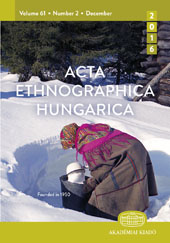The role of Judaism in the Jewish community after the Holocaust
The role of Judaism in the Jewish community after the Holocaust
Author(s): Peter SalnerSubject(s): Jewish studies, Customs / Folklore, Post-War period (1950 - 1989), Fascism, Nazism and WW II, Sociology of Religion, Identity of Collectives
Published by: Akadémiai Kiadó
Keywords: Judaism; conflicts inside community; emigration; Jewish forum; identity; cremation;
Summary/Abstract: Through conflicts of opinions inside the Bratislava Jewish religious community, the author monitors changed relations toward Judaism after the Holocaust. The current form of the community was due to Regulation 231-1945 concerning “the arrangement of the conditions of the Jewish faith members in Slovakia”. This resulted in religious, economic, and organizational centralization. After the 1968 occupation, those who stayed behind in Bratislava concluded that due to the emigration of the young and middle generations, the community lost its future and under the newly established conditions it was losing its past too. The Velvet revolution helped to overcome passivity existing until then. An informal gathering called Jewish forum helped to build and revive the Jewish identity. The status of the present-day Judaism can be illustrated by the fact that 36.6 percent of funerals in the course of 2001–2013 were done by cremation prohibited in Orthodox Judaism. It has been a manifestation of solidarity with the “burials” of those killed in concentration camps; but it is also a kind of revolt against God who did not prevent the Shoa. Today both individuals and families create their own model based on the traditions that they choose for themselves. Practicing such customs does not follow from Judaism, but it is an expression of one’s affiliation with the community and its traditions.
Journal: Acta Ethnographica Hungarica
- Issue Year: 60/2015
- Issue No: 1
- Page Range: 215-224
- Page Count: 10
- Language: English
- Content File-PDF

